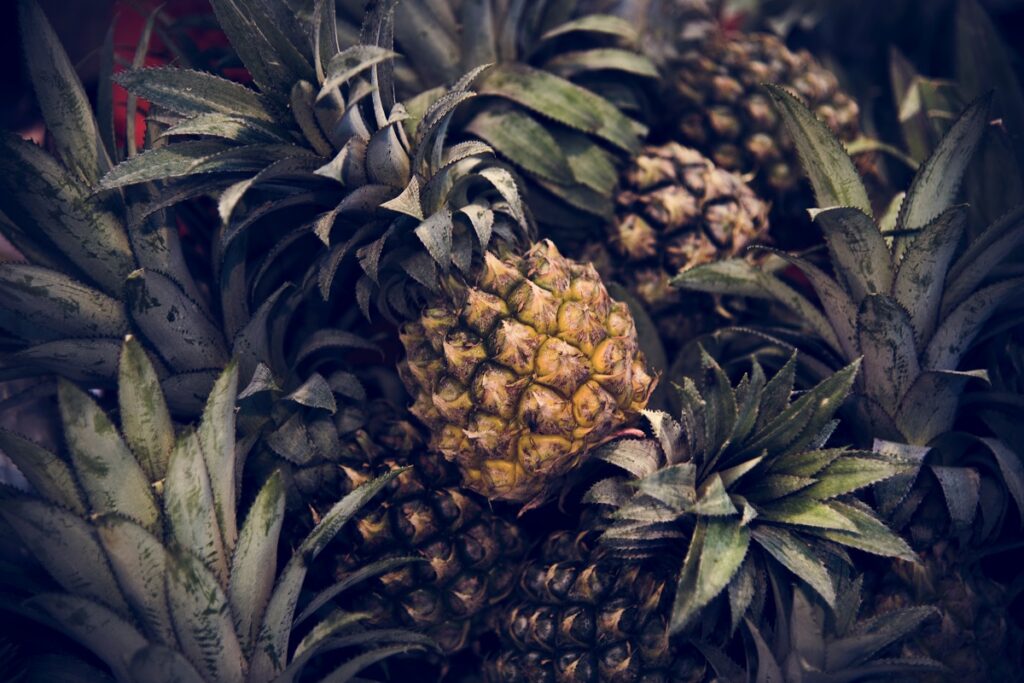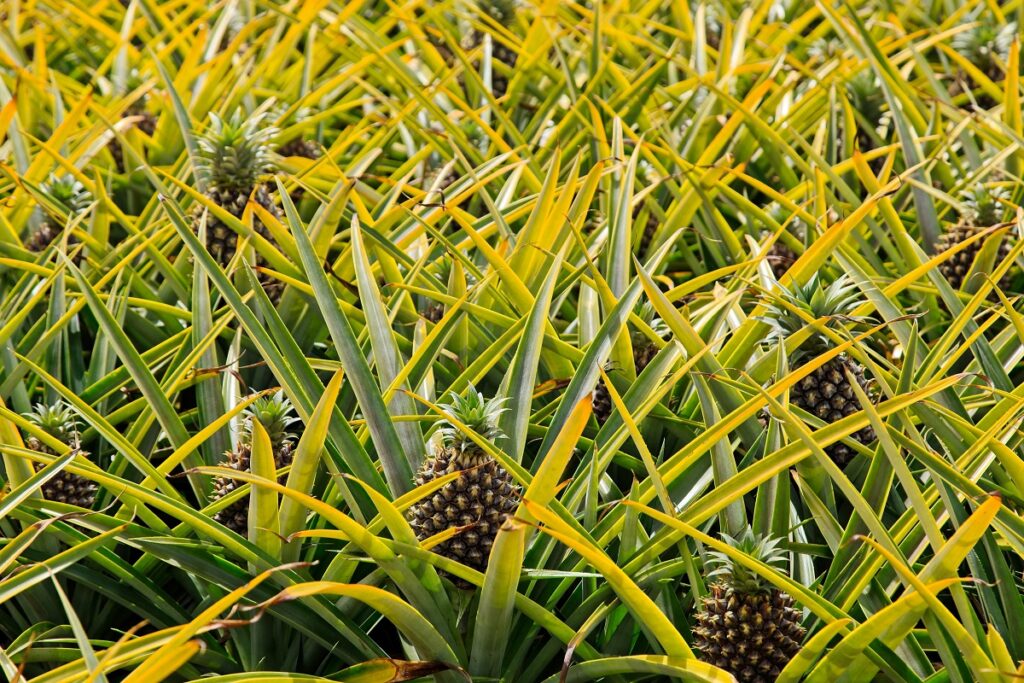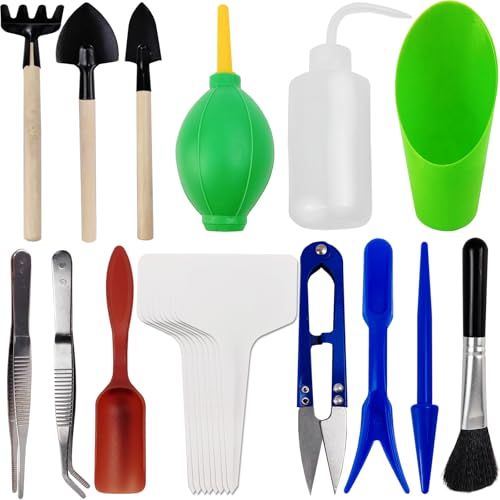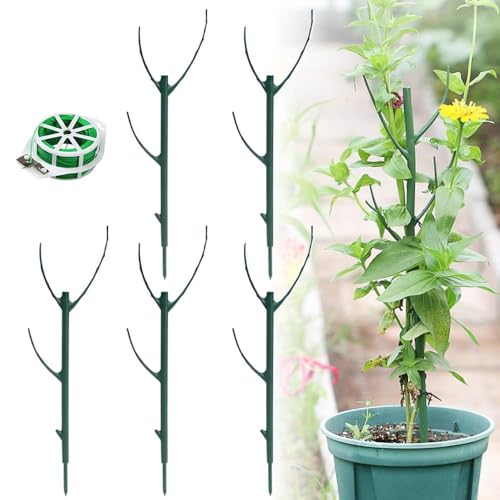Introduction
Did you know you can grow your own pineapples, even in containers or limited spaces? This tropical delicacy isn’t just for large-scale plantations—home gardeners and small-scale farmers across the United States are discovering the joy of cultivating this sweet, nutritious fruit right in their own backyards.
Whether you’re in Florida, Hawaii, Southern California, or even growing indoors in cooler climates, this comprehensive guide will show you exactly how to plant pineapple and nurture it through a successful harvest. The best part? You can start with nothing more than the crown from a store-bought pineapple!

Why Growing Pineapples Is Worth Your Time
Pineapple cultivation offers unique advantages for home gardeners and small-scale producers looking to diversify their crops.
Economic and Practical Benefits
Low Startup Costs: You can literally start from kitchen scraps—the crown of a grocery store pineapple becomes your free planting material.
Minimal Maintenance: Once established, pineapples require less intensive care than many fruit crops, making them ideal for part-time gardeners.
Strong Market Value: Fresh, locally grown pineapples command premium prices at farmers markets and specialty stores, with organic varieties fetching even higher returns.
Versatile Growing Options: From large field operations to single container plants on patios, pineapples adapt to various growing situations.
Nutritional and Culinary Appeal
Pineapples are packed with:
- Vitamin C for immune support
- Bromelain, a unique enzyme that aids digestion
- Manganese supporting bone health and metabolism
- Antioxidants that fight inflammation
Fresh-picked pineapples offer incomparable sweetness and flavor compared to shipped fruit, making them a garden treasure.
Growing Season Advantages
Cycle Time: 18-24 months from planting to harvest (varies by climate)
Yield: One plant produces one fruit per cycle, with potential for ratoon crops
Continuous Production: Staggered plantings ensure year-round harvests in suitable climates
Understanding Pineapple Plant Basics
Before diving into how to plant pineapple, let’s understand what you’re growing.
Plant Characteristics
Pineapples (Ananas comosus) are herbaceous perennials in the Bromeliaceae family. Key features include:
- Height: 3-5 feet tall and wide at maturity
- Leaves: Long, sword-shaped, often with spiny edges
- Root System: Shallow and fibrous
- Growth Habit: Central rosette with fruit developing on central stalk
- Propagation: Vegetative (through crowns, slips, or suckers)
Common Pineapple Varieties for Home Growing
Smooth Cayenne: Most common commercial variety, large fruit, moderate acid
Queen Victoria: Smaller, very sweet, compact plant, ideal for containers
Sugarloaf (Kona): White flesh, extremely sweet, no acid, spineless leaves
Red Spanish: Aromatic, hardy, tolerates cooler temperatures
Pernambuco (Eleuthera): Small, intensely flavored, excellent for eating fresh
For home gardens, Smooth Cayenne and Sugarloaf varieties offer the best balance of flavor, size, and growing ease.
Step 1: Selecting and Preparing Your Pineapple Planting Material
The first step in learning how to plant pineapple is choosing the right propagation material.
Propagation Methods
Crown (Top): The leafy top of the fruit—easiest method for home growers
Slips: Small plantlets growing at the base of the fruit
Suckers: Shoots emerging from the stem below the fruit
Ratoons: New plants growing from the base after the main plant fruits
Best Method for Beginners: Crown propagation from a fresh pineapple
How to Prepare a Pineapple Crown
Step-by-Step Crown Preparation:
- Select a Healthy Pineapple
- Choose fruit with green, healthy leaves
- Avoid crowns with brown, wilted, or damaged foliage
- Organic pineapples are preferable (no chemical residues)
- Remove the Crown
- Twist Method: Grasp the crown firmly and twist while holding the fruit—it should separate cleanly
- Cut Method: Slice off the top 1-2 inches of fruit with the crown attached
- Clean the Crown
- Remove any remaining fruit flesh (prevents rot)
- Peel away the bottom 2-3 rows of leaves to expose the stem
- You should see small root primordia (brown bumps) on the exposed stem
- Dry the Crown
- Place in a dry, shaded area for 3-7 days
- This allows the cut to callus over, preventing rot when planted
- The crown should feel dry to the touch before planting
- Optional: Root in Water First
- Place the prepared crown in a glass with water covering just the stem base
- Change water every 2-3 days
- Roots will develop in 2-3 weeks
- Then transplant to soil
Pro Tip: Apply rooting hormone powder to the base before planting to accelerate root development, though it’s not strictly necessary.
Step 2: Climate Requirements for Growing Pineapples
Understanding climate needs is crucial when learning how to plant pineapple successfully.
Ideal Growing Conditions
Temperature Range:
- Optimal: 68°F to 86°F (20°C to 30°C)
- Minimum: Above 60°F consistently (plant suffers below 50°F)
- Maximum: Can tolerate up to 95°F with adequate water
Sunlight Requirements:
- Full sun: 6-8 hours daily for best fruit production
- Partial shade: Acceptable in extremely hot climates (above 95°F)
Rainfall/Water Needs:
- Annual precipitation: 40-60 inches ideal
- Drought tolerance: Moderate—can survive dry periods but fruit quality suffers
- Humidity: Prefers 60-70% but adaptable
Growing Zones in the United States
Outdoor Year-Round Growing:
- USDA Zones 10-11: South Florida, Hawaii, Southern California coast
- These areas offer ideal conditions for in-ground cultivation
Outdoor Summer/Indoor Winter:
- Zones 9 and below: Grow in containers and bring indoors during cold months
- Pineapples make excellent potted plants for patios and sunrooms
Indoor Growing:
- All zones: Possible with proper lighting and temperature control
- Requires south-facing window or grow lights
- Ideal for educational projects or small-scale hobby growing
Frost Protection
Critical: Pineapples cannot tolerate frost. In borderline zones:
- Use frost blankets when temperatures drop below 50°F
- Move container plants indoors
- Plant near south-facing walls for radiated heat
- Consider greenhouse or high tunnel protection
Step 3: Soil Preparation for Planting Pineapple
Proper soil conditions dramatically impact pineapple success.
Soil Requirements
Texture: Sandy loam or well-drained loamy soil
Drainage: Excellent drainage is non-negotiable (pineapples rot in waterlogged soil)
Depth: 12-18 inches minimum for adequate root development
Organic Matter: Rich in compost or aged manure
pH Level: 4.5 to 6.5 (acidic to slightly acidic)
- Pineapples are acid-loving plants
- Test soil pH before planting
- Amend with sulfur if pH is too high
- Add lime sparingly if below 4.0
Soil Mix Recipes
For In-Ground Planting:
- Native soil (if well-draining)
- 3-4 inches compost worked into top 12 inches
- 1-2 inches coarse sand (if soil is clayey)
For Container Growing:
- 40% quality potting mix
- 30% perlite or coarse sand
- 20% coco coir or peat moss
- 10% aged compost or worm castings
Avoid: Heavy clay soils, compacted earth, or soils that stay wet
Container Selection
If growing in pots:
- Minimum size: 5-gallon container (larger is better)
- Drainage holes: Absolutely essential
- Material: Terra cotta (breathable) or plastic with excellent drainage
- Depth: At least 12 inches
Step 4: How to Plant Pineapple—Complete Planting Instructions
Now for the main event: actually planting your pineapple!
Timing Your Planting
Best Time to Plant:
- Warm climates: Plant anytime, but spring/early summer is ideal
- Cooler climates: Plant in late spring after last frost
- Indoor starts: Plant anytime with supplemental lighting
Avoid: Planting during extreme heat or cold snaps
In-Ground Planting Method
Step 1: Site Selection
- Choose a location with full sun exposure
- Ensure good air circulation (prevents fungal issues)
- Avoid low spots where water pools
Step 2: Prepare the Planting Hole
- Dig holes 4-6 inches deep and 8-10 inches wide
- Space plants 12-18 inches apart for home gardens
- For field production, use 24-36 inch spacing
Step 3: Plant the Crown
- Place crown in hole so the base sits at soil level
- Backfill with soil mixture, firming gently
- The lower leaves should just touch the soil surface
- Do not bury the crown too deeply—this causes rot
Step 4: Initial Watering
- Water thoroughly after planting to settle soil
- Fill the central cup (rosette) with water
- Keep soil moist but not soggy for first 2-3 weeks
Step 5: Mulch Application
- Apply 2-3 inches of organic mulch around (not touching) the plant
- Helps retain moisture and suppress weeds
- Use wood chips, straw, or shredded bark
Container Planting Method
Step 1: Prepare Container
- Fill with prepared soil mix, leaving 2 inches from rim
- Moisten soil before planting
Step 2: Create Planting Pocket
- Make a shallow depression in center of container
- Depth should accommodate the exposed crown stem
Step 3: Plant and Stabilize
- Set crown in depression
- Backfill and firm gently
- Add stakes if crown is unstable (remove once rooted)
Step 4: Water and Position
- Water thoroughly, filling the crown’s central cup
- Place in full sun location
- Rotate container weekly for even growth

Step 5: Essential Care for Growing Pineapples
Consistent care ensures healthy plants and quality fruit.
Watering Schedule
Pineapples are surprisingly drought-tolerant but produce best with consistent moisture.
General Guidelines:
- First 2 months: Keep soil consistently moist (not wet)
- Established plants: Water when top 2 inches of soil are dry
- Frequency: Typically 1-2 times per week (varies with climate)
- Amount: 1-1.5 inches per week including rainfall
Special Technique: Fill the central cup with water during dry periods—pineapples can absorb moisture through their leaves.
Overwatering Signs:
- Yellowing leaves
- Soft, mushy crown
- Root rot
Underwatering Signs:
- Brown leaf tips
- Curling leaves
- Slow growth
Fertilization Program
Pineapples are moderate feeders requiring regular nutrients.
Fertilizer Schedule:
Months 1-3 (Establishment):
- Apply balanced organic fertilizer every 6 weeks
- Use compost tea or diluted fish emulsion
Months 4-12 (Vegetative Growth):
- Switch to balanced NPK (10-10-10 or 6-6-6)
- Apply every 6-8 weeks
- Rate: ½ cup per plant for in-ground; 2 tablespoons for containers
Months 13+ (Pre-Fruiting/Fruiting):
- Reduce nitrogen, increase potassium (e.g., 5-10-10)
- Continue every 8 weeks
- Potassium enhances fruit sweetness
Micronutrient Needs:
- Iron: Essential (prevents chlorosis)
- Magnesium: Important for leaf health
- Consider micronutrient foliar spray quarterly
Application Method: Sprinkle granular fertilizer in a circle 6 inches from plant base, water in thoroughly.
Weed Control
Weeds compete for nutrients and water—critical in the first year.
Control Methods:
- Hand-pull weeds regularly
- Maintain 3-inch mulch layer
- Avoid disturbing shallow pineapple roots
- Never use weed fabric—restricts root growth
Step 6: Flowering and Fruiting
Understanding the fruiting process helps you maximize your harvest.
Natural Flowering Timeline
Vegetative Phase: 12-16 months
Flowering Trigger: Plant must reach mature size (16-20 months in ideal conditions)
Fruit Development: 5-6 months from flowering to ripe fruit
Total Time: 18-24 months from planting crown to harvest (can be longer in suboptimal conditions)
Forcing Flowering (Advanced Technique)
Commercial growers force flowering for scheduled harvests. Home growers can use this technique:
Ethylene Gas Method:
- Place ripe apple next to pineapple plant
- Cover both with clear plastic bag
- Leave for 3-4 days
- Remove bag and apple
- Flowering should begin within 6-8 weeks
Calcium Carbide Method (less recommended):
- Dissolve calcium carbide in water
- Pour into central cup
- Releases ethylene gas
- Caution: Use protective equipment; chemical method
When to Force: Only when plant has 40-50 mature leaves (typically 12+ months old)
Fruit Development Stages
Week 1-2: Flowering stalk emerges from center
Week 3-6: Individual flowers bloom (purple/blue)
Week 7-12: Tiny fruitlets fuse into single fruit
Week 13-20: Fruit enlarges and matures
Week 21-24: Color changes from green to yellow/gold

Step 7: Harvesting Your Pineapple
Knowing when and how to harvest ensures peak flavor.
Signs of Ripeness
Visual Cues:
- Color change: Base turns yellow/golden (varies by variety)
- Flat or slightly hollow sound when thumped
- Crown leaves pull out easily with gentle tug
- Sweet aroma noticeable at base
Time-Based: 5-6 months after flowering begins
Color Guide by Variety:
- Smooth Cayenne: Turns golden yellow
- Sugarloaf: Stays greenish-yellow
- Queen Victoria: Develops golden highlights
Pro Tip: Pineapples don’t ripen further after harvest, so timing is crucial!
Harvesting Technique
Tools Needed:
- Sharp knife or pruning shears
- Gloves (leaves can be sharp)
Method:
- Grasp fruit firmly with one hand
- Cut stem 1-2 inches below the fruit base
- Avoid damaging the plant if you want ratoon crop
- Handle gently to prevent bruising
Post-Harvest:
- Consume within 2-3 days for peak flavor
- Refrigerate up to 5-7 days
- Don’t store below 40°F (causes damage)
After Harvest: Ratoon Crops
After the main fruit is harvested, the plant will:
- Produce suckers (new shoots) from the base
- These can fruit within 12-18 months
- Second and third ratoon crops are common
- Each successive crop may be slightly smaller
To encourage ratoons:
- Leave the main plant in place
- Continue fertilizing and watering
- Remove dead leaves
- Allow 2-4 strongest suckers to develop
Alternatively, remove suckers and plant as new starts for expanded production.
Growing Pineapples in Containers: Special Considerations
Container growing expands pineapple cultivation to any climate.
Container-Specific Tips
Choosing the Right Pot:
- Start with 5-gallon, transplant to 7-10 gallon for fruiting
- Ensure multiple drainage holes
- Use pot feet to elevate for drainage
Soil Management:
- Container soil compacts over time—refresh top 2 inches annually
- Flush with water monthly to prevent salt buildup
- Monitor drainage—repot if water sits on surface
Watering Adjustments:
- Containers dry faster than in-ground plants
- Check moisture daily in hot weather
- Ensure complete drainage after each watering
Fertilization:
- Use half-strength fertilizer more frequently
- Apply every 4-6 weeks during growing season
- Reduce to every 8-10 weeks in winter
Overwintering Indoors:
- Move inside when temperatures drop below 60°F
- Place in brightest location possible
- Reduce watering frequency (soil dries slower indoors)
- Watch for spider mites in low humidity
- Supplemental grow lights recommended
Troubleshooting Common Pineapple Growing Problems
Problem: Yellowing Leaves
Possible Causes:
- Overwatering/poor drainage
- Iron deficiency (chlorosis)
- Natural aging (bottom leaves)
- Root damage
Solutions:
- Improve drainage, reduce watering
- Apply iron chelate or acidifying fertilizer
- Remove naturally aging leaves
Problem: Brown Leaf Tips
Possible Causes:
- Low humidity
- Fluoride in tap water
- Salt buildup from fertilizer
Solutions:
- Mist plants in dry climates
- Use rainwater or filtered water
- Flush soil monthly
Problem: Plant Not Flowering
Possible Causes:
- Too young (needs 12-16 months minimum)
- Insufficient light
- Inadequate nutrition
- Wrong temperature range
Solutions:
- Be patient—verify plant age
- Move to sunnier location
- Increase feeding frequency
- Try ethylene forcing once mature
Problem: Fruit Is Small or Misshapen
Possible Causes:
- Poor nutrition during fruiting
- Water stress
- Pest damage
- First-time fruiting
Solutions:
- Increase potassium fertilizer during fruiting
- Maintain consistent moisture
- Control pests aggressively
- Second fruit (ratoon) often larger
Problem: Crown Rot After Planting
Possible Causes:
- Planted too deep
- Crown not dried before planting
- Excessive watering
- Poor drainage
Solutions:
- Ensure proper planting depth
- Allow 3-7 day drying period
- Water less frequently initially
- Improve soil drainage
Companion Planting with Pineapples
Strategic companion planting enhances growth and pest control.
Good Companions
Nitrogen Fixers:
- Beans and legumes between rows
- Enrich soil naturally
Pest Deterrents:
- Marigolds (repel various insects)
- Nasturtiums (trap crop for aphids)
- Garlic and onions (general pest deterrent)
Beneficial Habitat:
- Alyssum (attracts beneficial insects)
- Dill (hosts predatory wasps)
Plants to Avoid
Poor Companions:
- Other bromeliads (disease cross-contamination)
- Heavy feeders (compete for nutrients)
- Tall plants (create shade)
- Vegetables requiring frequent tilling (disturbs shallow roots)
Maximizing Yield: Advanced Tips
Planting Schedule for Continuous Harvest
Staggered Planting Strategy:
- Plant new crowns every 2-3 months
- Creates rolling harvest schedule
- Ensures fresh fruit year-round in suitable climates
Example Schedule:
- January: Plant batch 1
- April: Plant batch 2
- July: Plant batch 3
- October: Plant batch 4
Result: Harvests every 3-4 months once system is established.
Increasing Fruit Size
Proven Methods:
- Generous spacing (24-36 inches between plants)
- Consistent fertilization with emphasis on potassium
- Optimal water management (never drought-stressed)
- Timing flowering when plant is fully mature
- Growing second ratoon (often largest fruit)
Variety Selection by Goal
For Maximum Sweetness: Sugarloaf, Kona varieties
For Largest Fruit: Smooth Cayenne, MD-2
For Cold Tolerance: Red Spanish, Natal Queen
For Container Growing: Queen Victoria, Sugarloaf (compact)
For Commercial Production: MD-2, Smooth Cayenne (uniform size)
Economic Potential of Small-Scale Pineapple Production
Market Opportunities
Direct-to-Consumer Sales:
- Farmers markets: $5-10 per fruit (organic $8-15)
- CSA boxes: Premium addition
- U-pick operations: $4-8 per fruit
Wholesale Options:
- Restaurants seeking local tropical fruit
- Specialty grocery stores
- Juice bars and smoothie shops
Value-Added Products:
- Dried pineapple ($15-25/lb)
- Pineapple juice
- Preserves and jams
- Crowns as ornamental plants ($3-5 each)
Production Economics (Example)
Per 100 Plants:
- Initial investment: $50-150 (crowns, soil amendments, irrigation)
- Annual inputs: $100-200 (fertilizer, pest control)
- Expected yield: 80-90 fruits
- Potential revenue: $400-900 (farmers market prices)
- Labor: Moderate (2-3 hours weekly)
Break-even: Typically achieved in second year with ratoon crops.
Sustainability Practices for Pineapple Growing
Water Conservation
- Drip irrigation for 40% water savings
- Mulch heavily to retain moisture
- Rainwater harvesting for chemical-free irrigation
- Central cup irrigation reduces soil water needs
Organic Production Methods
- Compost tea instead of synthetic fertilizers
- Beneficial nematodes for pest control
- Crop rotation with nitrogen-fixing cover crops
- Natural pest deterrents (garlic spray, neem oil)
Waste Reduction
- Crown propagation eliminates plant purchase costs
- Compost plant material after harvest
- Use fruit scraps for composting or animal feed
- Save slips and suckers for continuous planting
Frequently Asked Questions
Q: Can I grow pineapples from store-bought fruit?
A: Absolutely! The crown from any fresh pineapple can be planted. Choose organic when possible to avoid growth inhibitors.
Q: How long until I get a pineapple?
A: Expect 18-24 months from planting the crown to harvesting fruit. Container plants may take slightly longer.
Q: Can one pineapple plant produce multiple fruits?
A: Each plant produces one fruit on the main stem, but after harvest, suckers develop that will fruit again (ratoon crops).
Q: Do pineapples need special fertilizer?
A: A balanced fertilizer works fine. They prefer slightly acidic conditions, so acidifying fertilizers or those formulated for citrus work well.
Q: Why are my pineapple leaves turning red/purple?
A: Often a sign of cold stress or phosphorus deficiency. Ensure temperatures stay above 60°F and check fertilization.
Q: Can I grow pineapples indoors?
A: Yes! They make excellent houseplants with sufficient light. A south-facing window or grow lights work well. Don’t expect fruiting without very bright light.
Q: Is pineapple growing difficult?
A: No! Pineapples are actually quite forgiving once established. The main challenges are patience (long growing time) and providing frost protection in cooler climates.
Related Resources
How to Grow Strawberries: Complete Home Garden Guide
Tropical Fruit Growing: A Beginner’s Guide
Container Gardening for Small Spaces: Best Practices
Conclusion: Start Your Pineapple Growing Journey Today
Learning how to plant pineapple opens the door to growing one of the world’s most beloved tropical fruits, right in your own space. Whether you’re cultivating a single container plant on your patio or establishing a small pineapple patch for market sales, the process is surprisingly straightforward and incredibly rewarding.
Key Takeaways
✅ Free to start using crowns from grocery store pineapples
✅ Adaptable to various growing situations from pots to fields
✅ Low maintenance once established
✅ Market potential for small-scale producers
✅ Educational value for family gardening projects
✅ Delicious results with incomparable fresh-picked flavor
The 18-24 month wait from crown to fruit teaches patience, but watching your plant develop through each growth stage is fascinating. That first homegrown pineapple—sweeter and more aromatic than anything you’ve bought—makes every bit of wait worthwhile.
Ready to get started? Pick up a fresh pineapple from your local market this week, save that crown, and begin your pineapple growing adventure. In less than two years, you could be harvesting your own tropical treasure!




